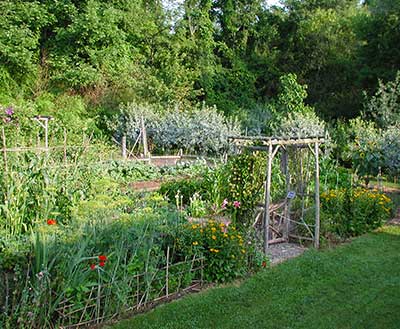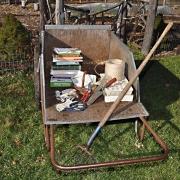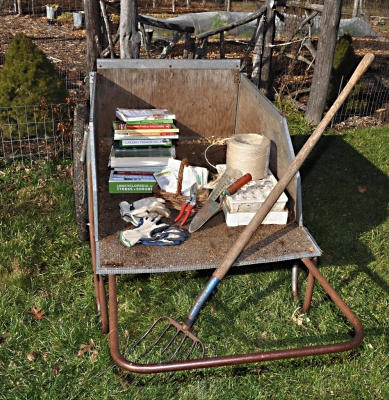THE GIFT OF EXPERIENCE, OTHERS
READ ALL ABOUT IT
I’ve heard wizened gardeners boast at how many years they’ve been gardening, impressing newbies with their unspoken knowledge. I’ve never been much impressed by anyone’s years gardening as an indicator of horticultural prowess.
I speak from experience: I’ve swung a scythe for many decades, which may lead others to believe me to be a long time expert scyther. Not so. A few years ago, after 25 years of scything, I learned I was using it incorrectly. (Unfortunately, earlier on I had the hubris or ignorance to describe it and its use for a magazine article which included a sepia-toned photograph of me swinging it — wrong, I subsequently learned).
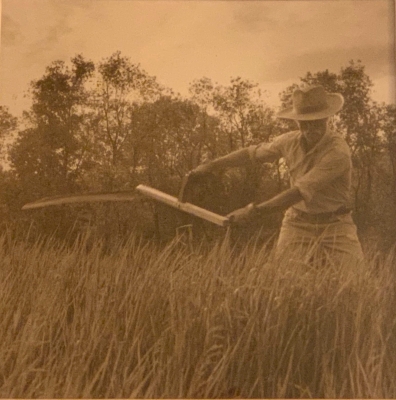
On the other hand, as a newbie gardener I had access to one of the best agricultural libraries in the country (I was in graduate school in agriculture at the time), and voraciously devoured its holdings. After only a couple of years of gardening and reading, I had — in all modestly — a vegetable garden to vie those of much more seasoned gardeners.

Most gardeners pretty much do what they’ve done year after year. Even if new techniques, tools, and plants were tried annually, it would take a long time to make sense out of all of it. Enter books, a streamlined way to garner “experience.” Not firsthand, of course, but a way to learn from the successes and failures of others who chronicled their horticultural ups and downs. Also a way to learn more generally about what makes gardens tick, the soil types, the insects, the climates, the many plants that you or I may never grow — nor, perhaps, want to after learning about them. It all makes for a better and more resilient gardener.
BOOKS, FROM THE GROUND UP
Over the years I have both purchased and been sent review copies of many, many gardening books. As I look over my bookshelves I see a number of them — some old, some new — that, in my opinion, would be must-reads for gardeners, beginning or otherwise. Interestingly, none of the titles have the word “organic” in them. Not to worry; any good gardening is organic.
The following books can’t help but represent my biases for writing styles and interests. Still, I’ve forced myself to leave out some favorites because they’re neither foundational nor perhaps would be generally of interest.
Good gardens start from the ground up, so let’s start with some books about soil. For the basics, see Robert Pavlis’ Soil Science for Gardeners: Working with Nature to Build Soil Health. For more intimate knowledge and understanding, turn to Fundamentals of Soil Science by Henry D. Foth and Lloyd M. Turk, or, much more deeply intimate, The Nature and Properties of Soils by Ray R. Weil and Nyle C. Brady. And then Lazy-Ass Gardening: Maximize Your Soil, Minimize Your Toil by Robert Kourik and — I almost forgot to mention! — Weedless Gardening by yours truly.
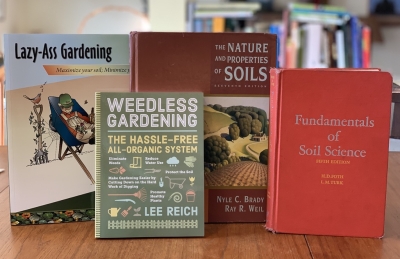
With the ground covered, vegetable can be planted. For oodles of very useful, basic information in the form of tables, there’s Knott’s Handbook for Vegetable Growers. It’s mostly for farmers, but also very useful for gardeners, as is The Market Gardener by J. M. Fortin. Also, again, my book Weedless Gardening.
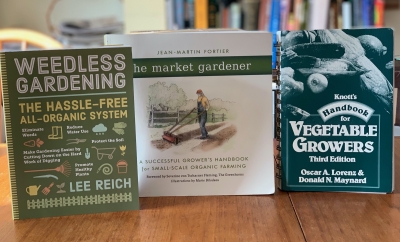
Even here in New York’s Hudson Valley, where winter lows commonly plummet to minus 20°F, fresh, home-grown vegetables are possible. Elliot Coleman has explored and innovated many of the ways in Four-Season Harvest and The Winter Harvest Handbook. My greenhouse is currently packed with living, fresh greenery, growing slowly and ready for harvest now and over the next few months. If I had read Lindsey Schiller and Marc Plinke’s The Year Round Solar Greenhouse before building mine, I would have made it even more efficient as far as heat production and retention.
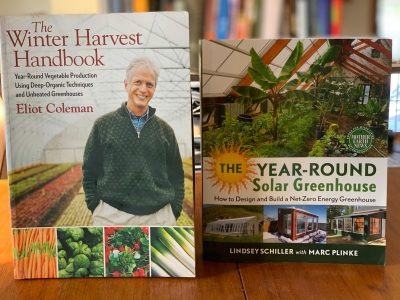
One can’t live on bread alone. For sprucing up appearances, good books include The American Meadow Garden by John Greenlee and, indoors, Well-Clad Windowsills by Tovah Martin. For solid, good information on trees, shrubs, and vines, I turn to my dog-eared copy of Dirr’s Encyclopedia of Trees and Shrubs. For flowers, The Flower Farmer by Lynn Byczynski.
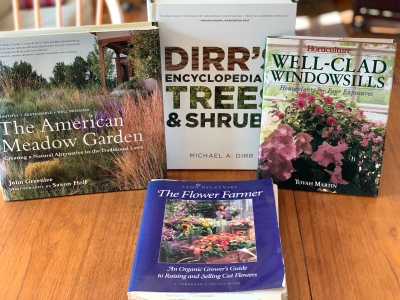
Of course, no need to choose between living on bread alone or prettiness. You can often have both — on the same plant. That was the theme of Rosalind Creasy’s Edible Landscaping, which covered all kinds of plants from asparagus to wheat, as well as my more focused in its scope Landscaping with Fruit, going from alpine strawberries to wintergreen. Integrating edible plants in the landscape is an important component of permaculture; for a fun and short but thorough overview of the too often too seriously presented theory and practice of permaculture, I’d turn to Edible Landscaping with a Permaculture Twist by Michael Judd.
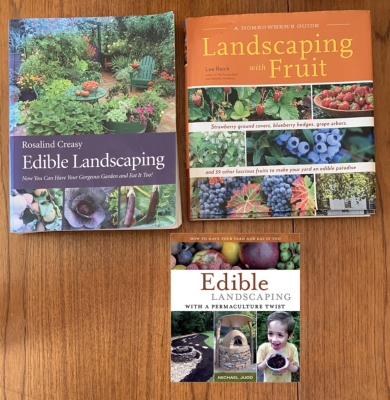
AND ROUNDING THEM OUT . . .
Many of the books on my shelves are of a more general nature. Early on in my gardening life, I frequently dipped into them; not so much these days. Still, my keeping them on the shelves is evidence of their value to me.
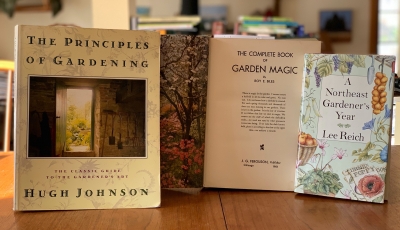
One of the best for a broad overview of everything from garden history, design, botany (and much more) is Hugh Johnson’s Principles of Gardening. Also painting a broad stroke but more on the nitty gritty of what to so when, and how to do it in the garden, through the year is my A Northeast Gardener’s Year (my first book, back in 199!) and Roy Biles The Complete Book of Garden Magic. The latter was published in 1951, so take some of the recommendations, especially those for pesticides with a grain of salt. But you’ll know to do that that after poring through all the other books I mentioned.
